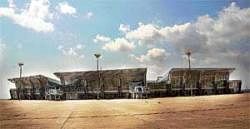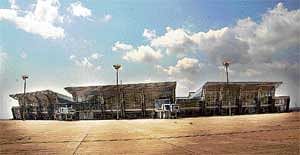

ESG India has squarely blamed the Director General Civil Aviation, Airports Authority of India, Ministry of Civil Aviation and the Government of Karnataka for their “criminal” negligence that led to the mishap.
The ESG India stated that it fought the case twice in the High Court to stop the construction of this second runway in Mangalore airport on grounds that the design simply did not conform to the most basic national and international standards of airport design.
The ESG contended in its second PIL in the Karnataka High Court in 2002 that the “Minimum Area for Stop-way: At page 155 of the said (ICAO) report, para 2-1 prescribes standards for providing the minimum area for a stop way and/or a clear way in the event an aircraft undershoots or over-runs the runway.
For instance, if an aircraft has initiated take off, and a technical flaw requires emergency stop, the standard prescribes the minimum area that should be kept free to enable such a stop. In the instant case, the runway distance itself is about 2400 metres, and even if the area left is most cautiously utilised, what is left is only about 300 metres on each end of the runway. By the prescribed standard, this is far below the required distance needed for an emergency stop way.
The conclusion was: “Therefore, the chances of an aircraft that has achieved the decision speed forcing an emergency stop are critically minimised, and the inevitable consequence could be that the plane would come crashing down the hillsides from a height of 80-100 metres on either side of the proposed runway.”
The petition was dismissed by the High Court. Finally the ESG knocked on the doors of Supreme Court, which on February 07, 2003 maintained that the Government shall comply with all applicable laws and also with environmental norms in constructing the Airport while referring to the second runway and terminal tower at Mangalore. The SC then dismissed the special leave petition filed by the ESG India challenging the order of the High Court of Karnataka. The Airport Authority of India decided to expand the Mangalore Airport allegedly buckling to the pressure created by the business lobby in 1987.
ESG’s contention
The ESG India contented that this land was along a cliff, with a drop of about 100 metres on all sides except where there was interconnection with the old terminal building. Such topography was inherently unsuitable for the building of such an airport.
The ESG had suggested a more appropriate location for the expansion of the airport, which would have been towards north from the existing runway. However, this option was not even considered as the acquisition of such lands would displace about 70 large landholding families, most being highly connected politically.
A decade long resistance by the project affected communities was repeatedly ignored by the Government, even when it was highlighted that project as proposed, if built, would be in fundamental violation of Aircraft Act of India, the binding standards prescribed by the International Civil Aviation Organisation (ICAO), the National Building Code of India, Environment Protection Act, and the Town and Country Planning Act.
Basic norms for an airport
* Minimum required width of the basic strip - 300 metres
* This is standard for pilots to land or take off on the strength of instrument support and without sighting the runway
* This width mandatory to provide for instrument or human error
* This standard also provides for emergency evacuations measures
The flaw
* The basic strip has a 100 metres drop
* Mere 200 metres available for the basic strip of the runway
* No emergency evacuation measure provided in the airport
* No techno-economic feasibility (TEF) report exists till date
* An Environment Impact Assessment was not initiated
* Nine mtpa MRPL is situated within 4 kms while standards prescribe that the refinery should be 8 kms
* High Tension Transmission Line at 1.5 km away while it should be at least 3 kms from the runway
All well, says Airport Director
“The proposal to extend the runway has been sent to the Centre long ago. We already have sufficient land in our possession to take up the work,” Mangalore airport Director Peter Abraham told Deccan Herald.
He, however, refused to comment as to why the Centre has been dilly-dallying approving the proposal. Abraham further said the airport has the infrastructure to handle even airbus 310, much bigger aircrafts than the ill-fated Boeing 737-800. The AAI had proposed to extend the runway to 9,000 ft only to get the international status to the airport -- one of the standards required to get the status, he added.
The Director, however, did not clarify whether the airport had sufficient safety area beyond the runway for any emergency overshoot landing, but maintained that every safety standard has been fulfiled.